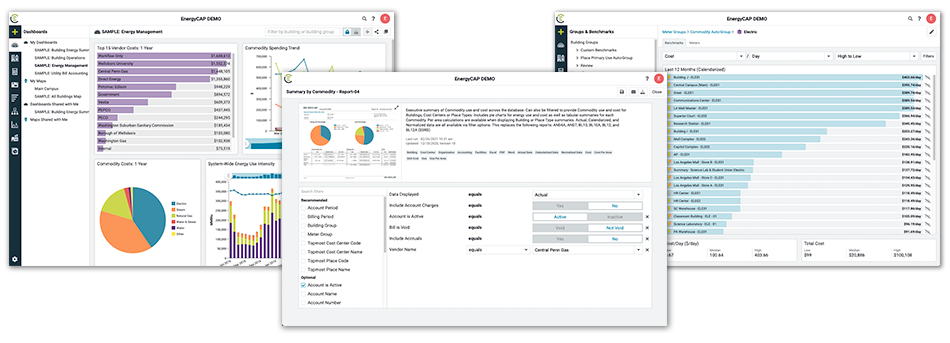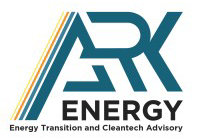UniFirst Uses Utility Management Software Effectively
As the second-largest uniform services provider in the United States, UniFirst Corporation has a unique energy profile based on its laundering operations. These activities require custom report metrics. But with facilities widely scattered all over the U.S. and other countries, UniFirst had difficulties with utility bill management and data collection. A robust energy management software platform provided a scalable tracking and reporting solution.
Overcoming Utility Tracking Challenges with Software
UniFirst Corporation had some unique energy management challenges. With an international workforce dispersed to multiple locations, it was difficult to track energy rates for multiple vendors. To make matters worse, a decentralized utility bill pay process was causing confusion in managing hundreds of utility accounts. UniFirst was hemorrhaging red ink in late fees for utility bills that were not being paid on time.
Given that core laundry operations accounted for 90% of revenue and 94% of operating income, the company needed to start keeping track of water and related energy use for all facilities. UniFirst was not a large electricity user, but laundry operations consumed quite a bit of water. Natural gas was the principal fuel for heating that water. This made a unique production metric (100 pounds of dry laundry serviced) that was critical for utility analysis.
UniFirst management had tracked utility bills piecemeal using Excel. Utility bill information was manually entered into a spreadsheet, and then calculations were performed to get limited energy information.
After billing data was entered into the spreadsheet, the same data was re-keyed into the company A/P system so payment could be made. This resulted in the double handling (sometimes triple handling) of each utility bill. The process was time-intensive and prone to error.
There were other limitations, too. The spreadsheet-based method did not provide an easy way of comparing one bill to another to determine if the company was being overbilled, or to identify meter or billing issues based on usage.
Without a central system for maintaining and reporting use/cost data, there was no way to benchmark the performance of different facilities to spot energy issues and prioritize responses. The company lacked the tools and infrastructure to productively handle and leverage energy information.
Then a breakthrough happened.
The Solution
In the spring of 2007, UniFirst invested in EnergyCAP UtilityManagement™ to audit utility bills, export required data to the company A/P system, provide energy information for facilities managers, and feed the production reporting system. This system is used by engineering staff and management at all U.S. and Canada locations. The software implementation has helped transform their energy and utility bill management programs.
Custom Reporting. During the energy management software implementation process, the team had to create some unique reports to fit their data management needs.
Thanks to the data feed provided by EnergyCAP UtilityManagement, managers have been able to more accurately determine how much electricity, natural gas, and water is being used to process garments using the ‘100 pounds of garments processed’ production metric.
In the UniFirst laundering operation, all UniFirst products (laundry, mats, towels, etc.) are weighed and recorded in pounds. This metric can now be correlated with energy use from month to month and benchmarked from location to location.
Reductions in Late Fees. The diversity of vendors makes utility bill import impractical for UniFirst, but the paper bills are manually processed far more quickly than before, which has enabled staff to steadily reduce late fee charges which had been expensive – especially for water bills. From 2013 to 2015, late fee payments had dropped from nearly $29,000 annually to $16,000, a reduction of 44 percent.
Improved Bill Management. Utility bills are now received at a central location. Bills are keyed manually by General Administrator Sidra Raney, then Energy Administrator Carrie Bertolino reviews them for accuracy using EnergyCAP’s graphical interface to ensure that the cost for each bill is in range. A user-customized dashboard provides the ability to check usage compared to prior bills, in order to catch any billing/meter issues up front before the bills are paid. Bills are either approved at that time or set aside for further review.
Updated Audit Protocols. Several EnergyCAP UtilityManagement audits have been helpful in the review process including:
- Bill audit 03 – cost duplicates last bill
- Bill audit 05 – gap in billing days
- Bill audit 11- highest cost/day
- Bill audit 12- highest use/day
Any problems that cannot be resolved quickly are moved to a problem folder. Carrie reviews the problem folder and also runs EnergyCAP UtilityManagement’s BL27 report, which provides a complete list of problem bills grouped by account and commodity. The report includes problem severity, type, and any notes associated with each bill. This makes it easy to resolve issues before they result in late payments.
Accessible Archives. The team also scans the bill to an image file. The scanned file is associated with each specific bill in the EnergyCAP UtilityManagement database, so facilities personnel can now access their utility bills online in “real time” and see when each was submitted for payment.
A/P Automation. Bill batches are electronically passed to the PeopleSoft A/P system during an overnight process using a voucher code file. The A/P system cuts checks and mails them out to vendors twice weekly. A handful of vendors are paid via an Automated Clearing House (ACH) network through a separate checking account.
Full Payback. With a robust energy tracking system, it is now possible to more accurately measure the performance of one facility in comparison to another. Energy tracking and benchmarking have also been useful in determining which facilities were paying more for sewer costs than they should have been, and in applying for evaporation credits when applicable. With more consistent energy tracking and reporting, UniFirst can now evaluate rate schedules for each meter more easily to determine if the best rates are being applied. The company has also been able to secure more favorable procurement arrangements with current and new vendors.
Lisa Roberts, Manager of Engineering Administration, estimates that UniFirst had saved enough money in the first two years using EnergyCAP UtilityManagement to achieve full payback for their software implementation costs. Since then, Roberts and her team have been able to devote more time and attention to saving energy by identifying inefficient facilities, determining the cause(s), and modifying that facility’s energy practices to conserve even more resources.
The team was also able to identify numerous instances where the company had moved out of a leased facility but had failed to disconnect utility services or terminate utility accounts. EnergyCAP UtilityManagement has facilitated a more orderly and cost-saving process to identify these issues, which are frequent occurrences with the UniFirst business model.
Sewer Savings. As the UniFirst energy team began to track a wider range of utility data in consistent categories, they were able to devote attention to unusual variations in cost in certain areas. Sewer surcharges were targeted using a custom report that EnergyCAP developed. With the report (UN101), UniFirst can not only report on the surcharge category, but can provide additional granular data for the three types of surcharges they deal with.
The surcharge expenses are used in other calculations, so it is important to ensure correct appropriation of costs.
A recent example is their plant in Albuquerque, NM. Two years ago they were being charged $1200/month. Last year it went down to $844/month. This year they’re only paying $246/month because they were aware of the surcharges, and put a treatment plan in place.
With EnergyCAP UtilityManagement reports, Bertolino says that UniFirst can:
- see what can be done to reduce the surcharges
- compare surcharge costs companywide
- narrow a utilities management focus to plants that are either charged more or that discharge higher levels of contaminants
- streamline treatment operations assistance (third party consulting)
The reports also help the energy management team find the outliers that may indicate errors or inconsistencies.
The Future
Roberts says that her team is continuing to re-introduce EnergyCAP and their utility billing processes to facilities management personnel, since some of the management staff is new.
The team is also working towards using EnergyCAP UtilityManagement more for budgeting purposes, and to track supplier energy contracts.
“The challenges we still face today to some degree are the end users,” said Roberts. “Getting the culture of our business to change, and enforcing the use of this program at the facility level has been and remains a challenge. It is hard to break old habits and there are still those facilities managers who take the information within EnergyCAP UtilityManagement and manually key it into a spreadsheet rather than run reports.”

 Best-in-class portfolio-level energy and utility bill data management and reporting.
Best-in-class portfolio-level energy and utility bill data management and reporting.
 Real-time energy and sustainability analytics for high-performance, net-zero buildings.
Real-time energy and sustainability analytics for high-performance, net-zero buildings.
 A holistic view of financial-grade scope 1, 2, and 3 carbon emissions data across your entire business.
A holistic view of financial-grade scope 1, 2, and 3 carbon emissions data across your entire business.
 Energy and sustainability benchmarking compliance software designed for utilities.
Energy and sustainability benchmarking compliance software designed for utilities.





